How to connect speaker wire regardless the connectors
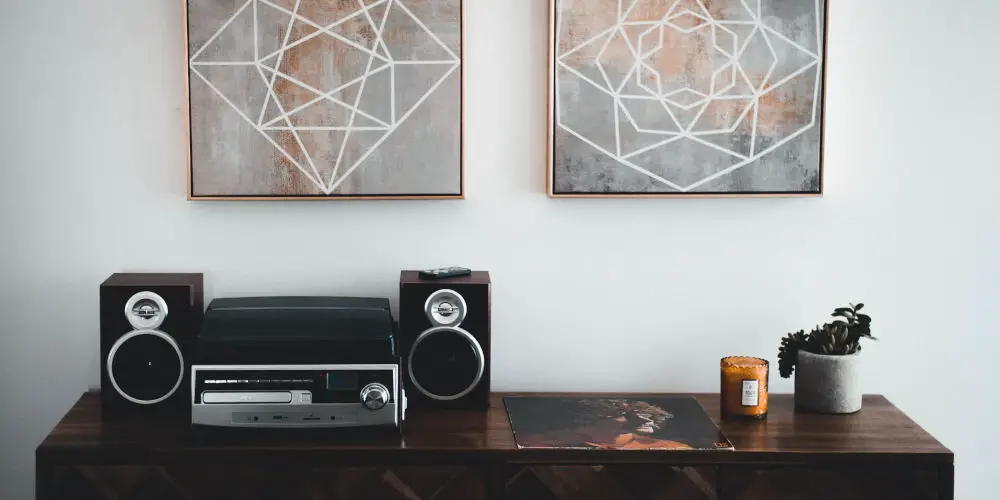
If you’re new to wiring speakers, it can be a slightly weird experience, especially seen as there is plenty of different connectors and cables. but don’t worry as you’ll about to learn how to connect speaker wire no matter what your speaker’s connectors are.
Granted connecting speakers to your Hi-Fi or home cinema’s AV receiver isn’t the most exciting thing you can spend time doing. However, without a speaker wire connecting them, all you’ll hear is silence!
Thankfully there are only a few different speaker connections to deal with and once you’ve hooked one speaker, the rest is simple. Before you can start to connect speaker wire to your device, you first need to understand the different connection types you’ll come across.
Once you understand the different connection types, then you’re ready to consider the best way to connect connect speaker wire to your devices. The final step is to secure your cables so that they are safe.
How to connect speakers using a speaker cable
You’ll notice after stripping the end of a speaker cable, that it’s made up of two wires. These are usually marked as plus and minus.
If you look at the back of your speaker, you’ll notice two connectors, one is usually red (plus) and black (minus). You’ll see the same black and red connector on the rear of an amplifier.
As long as you connect the same end of the speaker cable to each connection, it doesn’t matter where you use strand marked plus or minus. Of course, your speaker won’t work if you connect the minus wire to the plus terminal on the speaker and the minus terminal on the amplifier.
That said, we typically use the red wire to connect the positive terminal of the amp to the positive terminal of the speaker. The black wire is then connected between the negative terminals, completing the circuit.
If either wire isn’t fully pushed in, there will be a break in the circuit and you’ll have no sound. So it’s important to match the right wire to each terminal and ensure it’s firmly held in place, creating a strong connection.
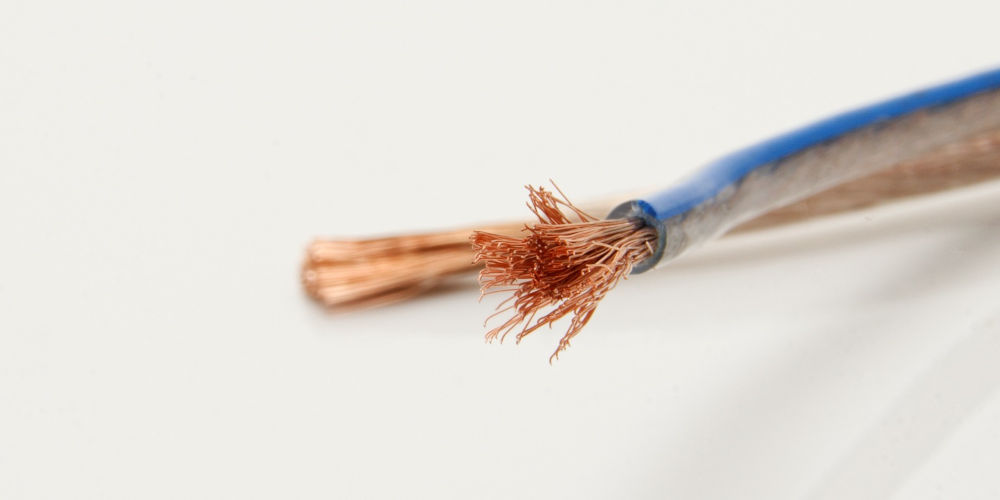
Will my speakers stop working after reversing the speaker wire?
If by reverse, you mean connecting the wire marked plus into the minus connections on your speaker and amp, and the other wire in the remaining connection, then your speaker will still work! Even if you wired your stereo like this, it would still sound great.
However, if you wired the left speaker using the red cable in the positive terminals and the black cable in the negative terminals, then did the reverse on the right speaker, you would have wired your speakers out of phase.
If a pair of speakers are out of phase, you’ll notice that the diaphragm of one speaker would move out, while in the other speaker it would be moving inwards. The result is a thin sound that lacks life and sounds weird.
You won’t damage your speakers but you’ll know something doesn’t quite sound right! So it’s always good to double-check your wiring and ensure you’ve used the same wiring method to connect all the speakers.
If you’re using an AV receiver to power your speakers, you might be able to automatically detect and correct any speakers that are wired out of phase during the set-up process. However, this isn’t 100% foolproof, so it’s worth manually check all your speakers.
What about wiring the right speaker into the left amplifier channel?
As long as the wire form a complete circuit, you’re free to connect speaker wire the right speaker into the left amplifier channel. That said, it will sound weird as the person who mixed the audio has placed different elements on the left and right, creating a wide soundscape.
So you’ll want to check that your matching the speaker location to the most suitable amplifier channel.
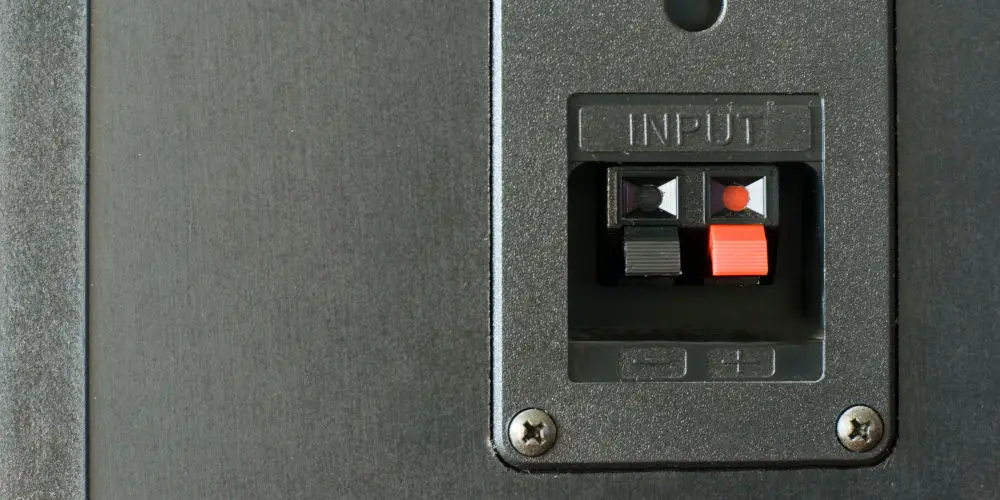
Spring Clips
Are there many different types of speaker wire connections?
Thankfully, there are only two main types of speaker connection you’re likely to encounter. Looking at the connection on your speakers and amplifier, you might have a combination of both.
Spring clips
You’ve likely seen springs clips on budget Hi-Fi, amplifiers and speakers, if not on plenty of other types of equipment. And as the name suggests, they are clips that use springs to hold the wire in place.
Simple, hold down the bottom part of the clip and push the speaker wire into the hole above. Typically, you’d use bare wire or pin connectors.
Binding posts
Found on all kinds of amplifiers and speakers, binding posts are very common. You can wire these connectors in two ways.
The simplest is to unscrew the red or black cap, then insert the bare speaker wire into the hole in the post and tighten the cap again
You could use banana plugs, which allow you to plug the wire into the end of each connector without the hassle of having to unscrew the binding posts. To do so, simply unscrew the banana plug, push the bare wire into the slot and tighten it.
Remember, you need 4 banana plugs per cable as you’ve got two wires, each with two ends. Thankfully, the highly affordable Goaycer 4mm Banana Plugs come in a pack of 12 (or 6 pairs).
While most amplifiers have binding posts, allowing you to insert a banana plug, some speakers will only offer spring clips. So it’s worth checking your set-up before ordering a load of banana plugs that you can’t use!
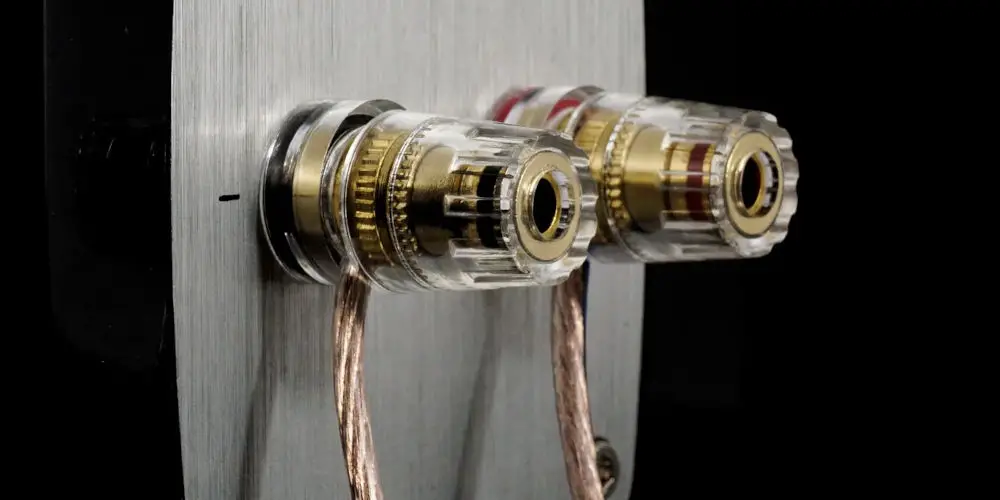
Binding posts
What’s the best speaker wire?
Unless you’re an audiophile who claims to hear the subtle difference between cables, it’s best to stick with a simple copper-clad aluminium speaker cable of around 14 gauge such as the InstallGear 14 Gauge AWG 100ft Speaker Wire. You’ll want to use purpose speaker cable as it’s widely available, highly affordable and doesn’t easily break.
Is there an ideal length of speaker wire?
Ideally, you want to keep your speaker wires short. Longer cables tend to sound muffled as there is a build-up of capacitance, which makes it harder for the higher frequencies to transmit across the wires.
You might want to wire a speaker in first, then cut the cable down to size to ensure you only using the short length possible.
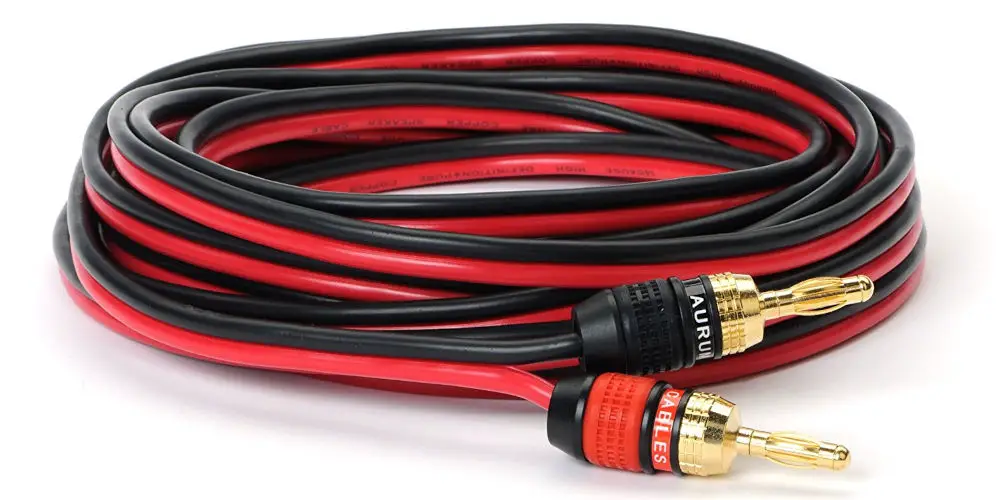
wire with banana plugs
Using spade connectors instead
Spades are another way to easily manage wires and allow you to easily connect speaker wire between devices. Just like with banana plugs, if you are using spades at both ends, you will need four per cable.
Two types of spade connectors are available: angled or straight. Typically, they connect to the speaker wire by crimping, soldering or being held in place by a screw. Spade connectors are ideal if your speakers are wall-mounted as you might lack the room to use banana plugs.
You shouldn’t need to solder a spade crimped connection if done correctly. To attach to your device, simple unscrew each binding post and push them into place. They will be very secure once you tighten the cap again. They offer a tighter connection than using bare wire.
How to connect speaker wire to your amplifier and speakers
Once you have the speaker wire cut to the right length with your preferred connector, then it’s time to wire your amplifier to your speakers. Wiring each speaker in should take a minute or two when done right. Just double-check each connection as you go!
If you’re wiring up a 5.1 surround sound system, then you might want to label each cable and start at the speakers. When all speakers are wired up, then you can connect each speaker to your AV receiver. This way you don’t have to keep moving equipment to access the rear connections.
As you have a clear idea of what banana plugs, bare wires or spade connectors are, wiring devices together is much simpler! All of these options are great when thinking about how to connect speaker wire. So, it’s down to personal preference.




